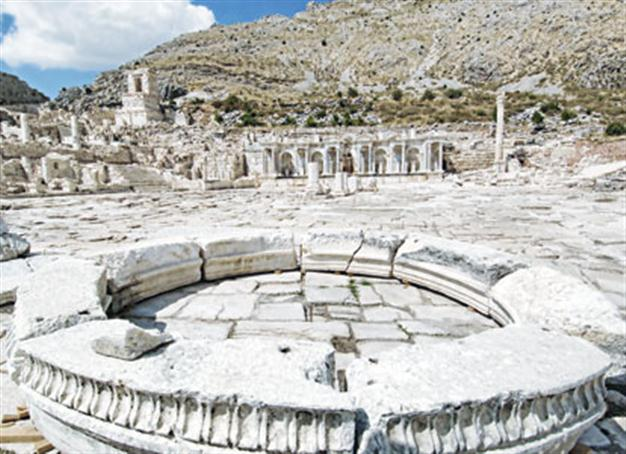
The Sagalassos excavations can continue for 500 years because there are many thing to discover, according to Waelkens, the archeaologist. AA photo
Brussels’ ancient city Tongeren is hosting an exhibition from Turkey. Artifacts unearthed during the excavation in Burdur have become an ancient heritage exhibition titled ‘Sagalassos: City of Dreams’ The exhibition, which will last until June 2012, focuses on the ancient life at Sagalassos and the also the heritage of the area.Artifacts unearthed during excavations in the ancient city of Sagalassos in Turkey’s southern province of Burdur’s Ağlasun district, are on exhibition at the Gallo-Roman Museum in Tongeren, the oldest city in Belgium.
There are 238 works in the exhibition.
The exhibition, titled “Sagalassos: City of Dreams,” will continue until June 17.
There are very valuable pieces in the exhibition, such as sculptures of Emperor Hadrian and Emperor Marcus Aurelieus.
Speaking to Anatolia News Agency, Marc Waelkens, who first started the archaeology excavation at Sagalassos in 1990, said Turkey was one of the richest countries in the world in terms of valuable archaeological heritage. Other countries cannot compete with Turkey in terms of this heritage, according to Waelkens.
Sagalassos excavation works used different disciplines and reveal every detail of the ancient world, said Waelkens. The team has gone beyond the classical archaeological excavation works and benefited from many different sciences, he said, noting that as a result it has revealed 10,000 years of heritage and people who lived there in the ancient era.
The excavations will enlighten stories about the ancient times, Waelkens said.
“We can write a film scenario from the histories that we have discovered in Sagalassos,” he said, adding that they are also ready to share all the information with everyone.
Waelkens said they did not do any DNA testing of remains to discover the era and origin of the people. “This discovery is only for revealing the relation between people,” said Waelkens, noting that they did not do any research to reveal the heritage of the people who lived at Sagalassos.
Waelkens also said: “When I was 6 I read a comic book about Troy and decided to do excavations in Turkey.”
“In 1996, I came to Turkey when I was 19 and I loved Turkey,” said Waelkens, adding that he participated in excavations in Turkey.
During the last 42 years, Waelkens said, Turkey has gone through many changes in terms of excavations and archaeology. “The only thing that did not change is the hospitality of Turkey,” he added. Waelkens also said he expected the future of Turkey in terms of archaeology will be great. “Turkey is a bridge between East and West and it will carry this to future generations,” he added. Turkey, according to Walkens, is the super power of the East Mediterranean region.
ieamikeamlkielmak
The Sagalassos excavations can continue for 500 years because there are many thing to discover, according to Waelkens.
Speaking during the opening of the exhibition, Culture and Museum Managing Director Osman Murat Süslü said there were still 150 excavations continuing in Turkey. Süslü said they had taken measures to prevent smuggling of artifacts.
The exhibition in Brussels is an important one, as it also shows the heritage to Turkish people living in the country, said Süslü, adding that the exhibition will also contribute to the presentation of Turkey.
The exhibition was prepared by opera director Guy Joosten.
The exhibition includes scripts, sculptures, a frieze of dancing girls, oil lamps, rings, pots, women’s portraits and eye drop bottles.
Burdur has more than 25 ancient cities, and it is very important to promote the area around the world. Researchers have also uncovered traces of Ottoman settlements in Sagalassos in recent excavations. The findings have revealed that the ancient city was abandoned after the 13th century.
During the excavations near the upper part of the old Ağlasun-Isparta highway, ceramics and metal tools from the Ottoman period were found.
These findings show that a settlement existed at Sagalassos in the Ottoman period and continued until the 18th century, experts said, adding that this showed a new dimension to the ancient city